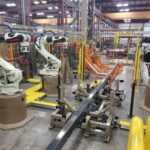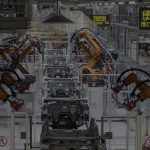Part 1 of 2 – Data Rich and Information Rich
One of the long-standing challenges of managing a 100% data sample is being data rich but information poor. In today’s modern manufacturing facilities, the fast cycle times and large data sets can often paralyze the people responsible for managing the overall quality of the parts produced. This data overload is compounded as companies lose skilled workers to retirement or attrition. The talent and experience gaps create a very reactionary culture in many facilities where the human resources can only react to critical quality alarms. Plant floor personnel have less and less time to be proactive and have even less time to perform the data analysis required to search for trends in common cause and special cause variation data. Advances in machine learning and artificial intelligence can aid modern manufacturers by automating the analysis for users and eliminating the reactive approach to quality spills.
Automatic plant floor analytics
It is now a reality for companies to leverage breakthroughs in data analytics to identify root cause faster. Tools like Argus from Perceptron act as “engineers in a box” crunching countless calculations behind the scenes while production runs uninterrupted. Now the large data sets get processed in real-time, with the software searching for correlations, upstream and downstream contributors to process variation, and special or common causes to inform quality professionals with suggestive answers to the problem, instead of merely pointing out there is an issue.
Data rich environments are perfect for machine learning
The amount of data generated during every production cycle in a manufacturing plant can be staggering. The data is often pristine with absolute accurate systems measuring in the 100-micron range every second, every cycle. Incorporating a machine learning layer is as simple as purchasing a software package and database that can handle all the data inputs in real-time. From there, the machine learning models will take over, looking for trends in the data based on existing measurement data and CAD information to notify operators of what is happening to their process and product. This is in stark contrast to the traditional methodology where plant personnel are alerted that there is a problem, not what the problem is or how to potentially solve it.
Use machine learning and AI to augment not replace
At the end of the value chain it is still people that perform most of the corrective actions based on the information provided by these new proactive systems. Think of the efficiencies to be gained in facilities if the workers can skip the hours or, in some cases, days of data analysis required to solve problems. Now the system does the analysis and provides the guidance on where to go first: Station 5 and locating pin. Valuable human resource time gets re-allocated to problem solving and you become data rich and information rich, which is a major win-win for manufacturing.
Taking information intelligence to the next level – Part 2
Our next blog will discuss how you can use information intelligence to automatically solve problems through proactive ‘machine learning’ and part routing.
Want to know more about how Perceptron uses machine learning? Contact us at info@perceptron.com.



